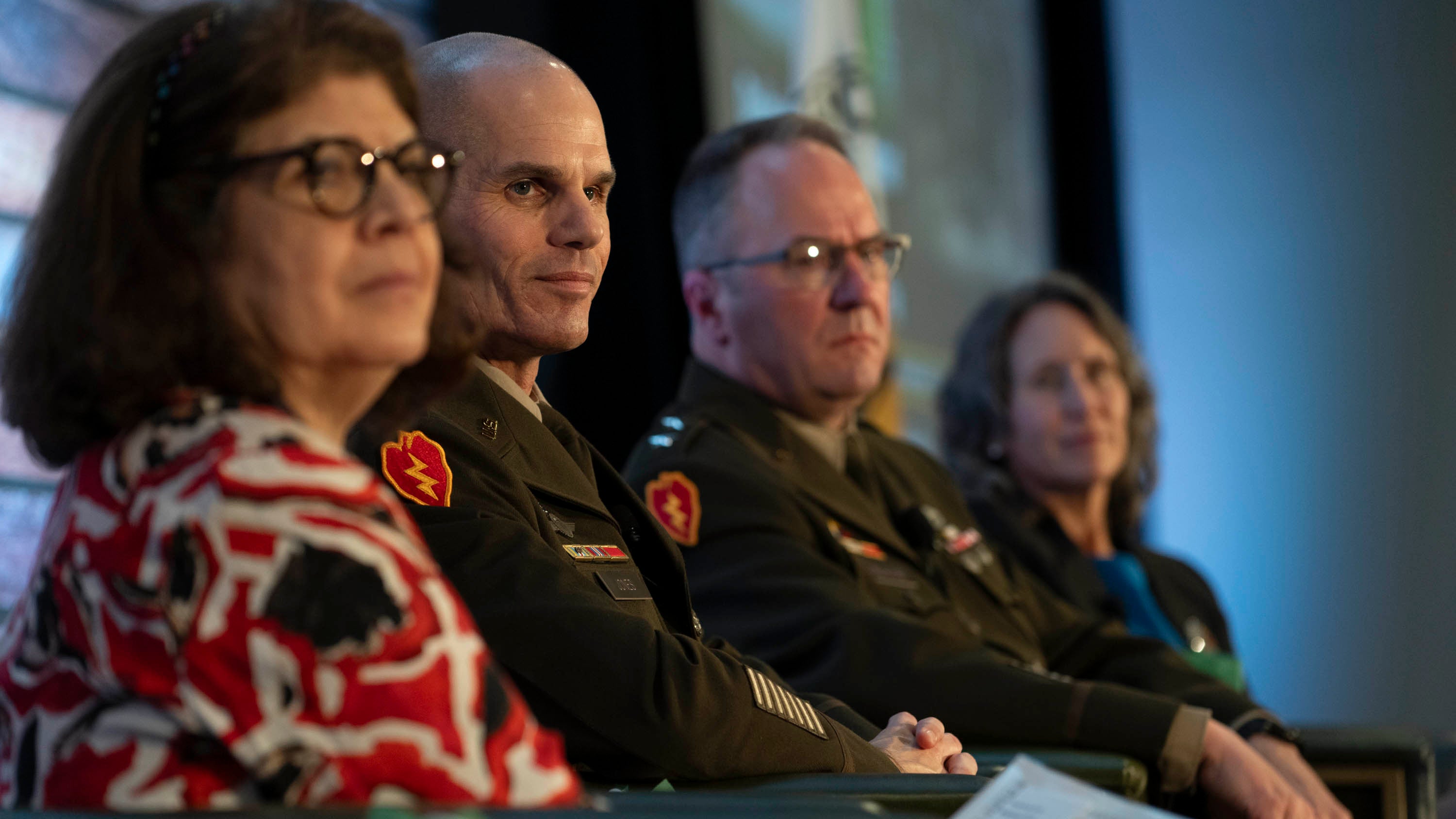More Tools Coming to Help Soldiers, Families Thrive
More Tools Coming to Help Soldiers, Families Thrive

Making sure military families on large Army posts have what they need to thrive is a big, intensive job—and it extends beyond the installation gates, a panel of leaders said Oct. 11.
Lt. Gen. Omar Jones, commanding general of Army Installation Management Command, was joined on a panel at the Association of the U.S. Army’s 2023 Annual Meeting and Exposition by leaders from one of the service’s largest posts: Fort Bliss, Texas. Maj. Gen. Jim Isenhower and his wife, Cheryl, emphasized the importance of engaging soldiers and families with effective and timely information, and joining forces with the local community to build a stronger network of support.
Cheryl Isenhower said she’s always working on the challenge of how to disseminate need-to-know information and updates quickly and reliably on a post that’s geographically the size of Rhode Island. One key, she said she's learned, is identifying “influencers,” those with a lot of connections who are good at spreading information via text.
“We are still working on some of the old traditional ways, good old rosters,” she said. “But what we've learned, too, is you trust your neighbor, you trust your peer, you trust your friend, and so we have to get those influencers out there at all those different levels.”
Jones said his command is looking to internalize these lessons, with efforts underway to develop better tools for disseminating information at every installation. In addition to the “My Army Post” app announced earlier in the day by Army Chief of Staff Gen. Randy George, these tools aim to provide more flexibility to meet local needs, Jones said.
“Maybe it’s flyers, maybe it’s digital signs at the installation,” Jones said. “As Team Bliss gets [the tools] and they say, ‘We want to do a little bit more of this, a little bit less of that to meet the needs of Community Bliss,’ they can do that.”
An audience member asked the panel about the information the new app promised to deliver, pointing out that it would pull information like military dining facility and post gym hours from Army websites, some of which are not regularly updated and are frequently inaccurate.
Jones pointed to a soldier feedback feature on the upcoming app that will help users flag outdated or insufficient information, but he also agreed that the issue was a problem that needs to be solved.
“You should be able to know before you leave your house, your car, your barracks, what are the hours,” he said. “It should be there at your fingertips, accurate and reliable, because you know that it is up to date. So that’s why we’re going in the direction we’re going. … [It’s] one of those problems that we’ve got to solve across the board.”
Just as important as the information delivery mechanisms is ensuring the information in circulation is accurate, the panelists said. The Isenhowers discussed their work to reframe the narrative at Fort Bliss, which can be viewed as an undesirable posting, with an “It’s Better at Bliss” campaign that highlights the post’s best features, including attractions near El Paso.
Soldiers also need to “tell the Army story” to the civilian communities around their installations, Jones said, particularly in an era where few Americans have direct exposure to the military.
“The soldiers in the room are the most effective spokesmen and women the Army has,” Jones said. “It’s our job, America’s Army’s job, to connect with the American people and to tell that story.”
Maj. Gen. Jim Isenhower added that forging connections with the community isn’t just about creating positive associations with the Army; it’s also about making sure there’s a robust support network available for families, the majority of whom live off-post. As an example, he described his effort to bring local religious leaders on post for breakfast twice a year to familiarize them with what units at Fort Bliss are doing.
“I have been very frank with them and said, ‘If these units deploy, our families are already in your communities, they’re volunteering in your churches, [and] I hope that you provide pastoral care, because the chaplains are coming with us,’ ” he said.
— Hope Hodge Seck for AUSA

